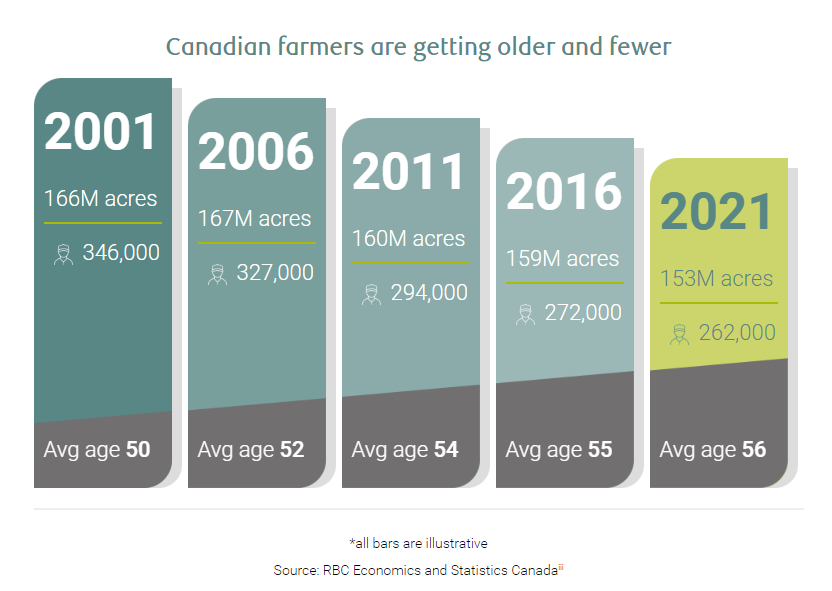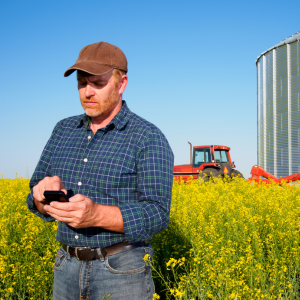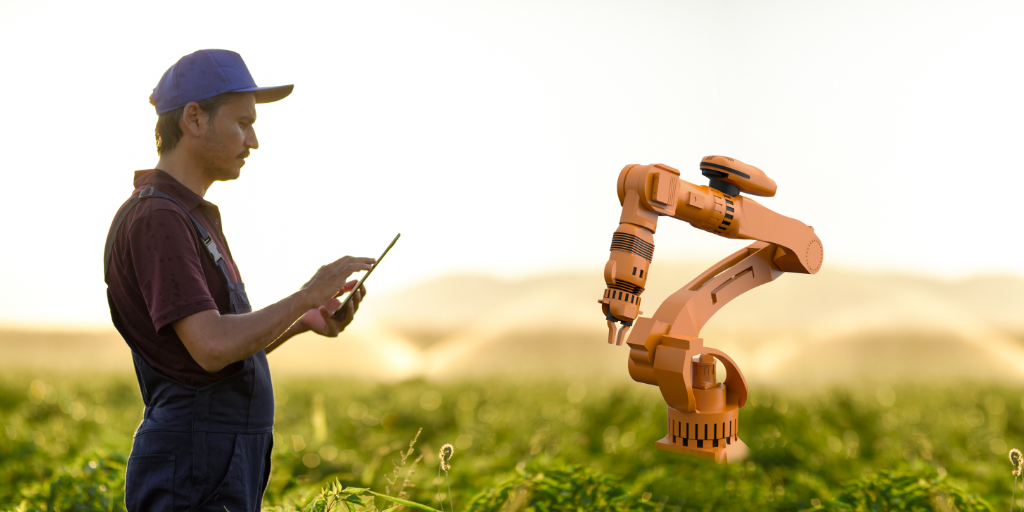As the world population continues to grow, so does the demand for food. For centuries, agriculture has been a labor-intensive industry, and many farming practices still require a considerable amount of manual labor. But as the global agricultural workforce is aging and the number of people entering the sector is decreasing, labor shortages are becoming the norm in agriculture each year. To overcome this challenge, the agricultural industry is investing in automation to reduce labor costs and increase productivity.
The labor shortage problem in agriculture has several causes. One of the primary reasons in the west is the aging of the workforce. The average age of farmers is increasing, and fewer young people are entering the sector. According to a study released in April by the Royal Bank of Canada, 40% of Canadian farm operators will retire by 2033. 
For some, automation offers a solution to the labor shortage problem. It allows farmers to reduce their reliance on manual labor and replace it with technology. The use of automation in agriculture can significantly reduce the amount of manual labor required, thus saving costs and increasing productivity.
The Western Growers Specialty Crop Automation Report, released at the end of April, revealed a 25 percent increase in average year-over-year agtech investment as the labor shortage persists. The survey also revealed that approximately 70 percent of participating growers indicated that they had invested in automation in 2022, with an average annual spend of $450,000-$500,000 per grower. This investment demonstrates the commitment of the agricultural industry to automation and the potential benefits it can provide.
Farming’s top tech? It’s all about weeds
Investments in autonomous weeding represented the greatest percentage of investments in 2022, and the majority of these investments were in hardware. In terms of ROI, while autonomous weeding equipment may have a high upfront cost, many growers report seeing return on investment in two years or less when it comes to their smart weeding systems.
Tech Spotlight: Weeding
What is an autonomous weeding machine? To be a true weeding robot, a product must be self guiding, use computer vision or some sort of object detection to identify weeds and crops, and use a self-targeting removal system.
There are three main removal methods when it comes to autonomous weeding:
- Mechanical
- Mechanical weeders use various attachments to physically remove, cut, or plough under weeds they encounter. Mechanical type weed removal is popular on organic farms.
- Chemical
- Weeders that use chemical applications behave more like a standard spray applicator but are self guided and self targeting. Many of these use precision applications that claim to reduce chemical use.
- Laser
- Some recent innovations in weed control use laser radiation to destroy weeds in their path. Though relatively new, this technology is both organic and low till.
Challenges to adoption:
Despite the benefits of automation, there are challenges associated with its adoption. One of the significant challenges is the high initial cost of investment. Automation equipment can be expensive, and the upfront costs can be a barrier to adoption, particularly for small-scale farmers. However, as the technology improves and becomes more widely adopted, the costs are expected to decrease.
Another challenge is the lack of standardization in the industry. There are many different automation technologies available, and farmers may have difficulty selecting the right equipment for their specific needs. A lack of interoperability between different technologies can also be a barrier to adoption, as farmers may have difficulty integrating different systems with their existing workflows.
However, it is critical to note that robots cannot replace human labor entirely. To fully take advantage of the benefits of automation, the upskilling of workforces is essential. The agricultural industry has traditionally relied on temporary, yet highly-skilled manual laborers. With increased automation, the workforce required will be more technical and will require different skill sets. This shift requires significant training of existing workforces, which will not only ensure the success of automation but also provide new opportunities for career advancement in the agricultural sector.
In addition to reducing labor costs and increasing productivity, automation may help to address some of the environmental challenges facing agriculture. For example, advanced systems for precision farming, which use technology to optimize inputs and reduce waste, can help to reduce the environmental impact of agriculture.

As the global population continues to grow and the need for safe and healthy food grows with it, the agriculture industry continues to contend with a labor shortage with no end in sight. Automation offers a potential solution to this problem, with the opportunity to reduce labor costs, increase productivity, and improve the long-term sustainability of farming operations. While there are challenges associated with the adoption of automation, such as the high upfront cost of investment, the industry is making significant strides in this area. Moreover, the adoption of automation presents opportunities for career advancement and upskilling of the existing workforce. In the long term, automation has the potential to transform the agriculture industry and help ensure that the growing demand is met.
Next week we’ll take a deeper look into the latest models of autonomous weed control, starting with the Carbon Robotics LaserWeeder, so stay tuned!
Croptracker develops agtech solutions for industry leaders. Located in Eastern Ontario, Canada, our mission is to make crop production safer, more efficient, and more profitable. Designed in partnership with fresh market producers and distributors, every tool we create is based on direct industry feedback.
Interested in learning more about Croptracker? Learn more about our Farm Management Software, or book a demonstration to schedule a meeting with our product experts.


